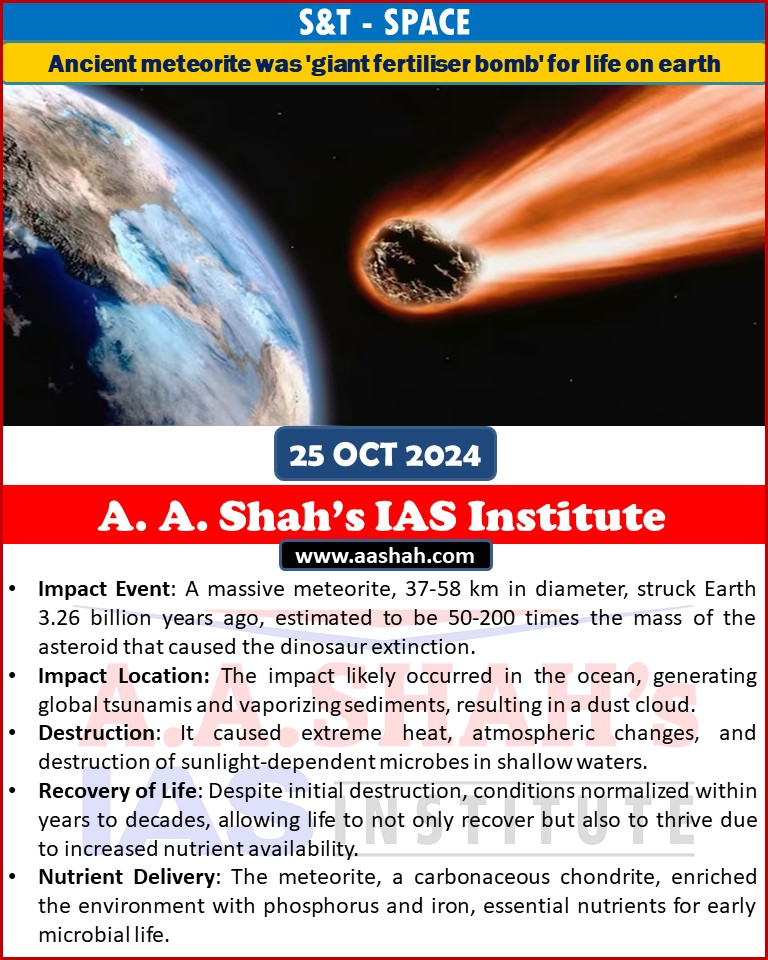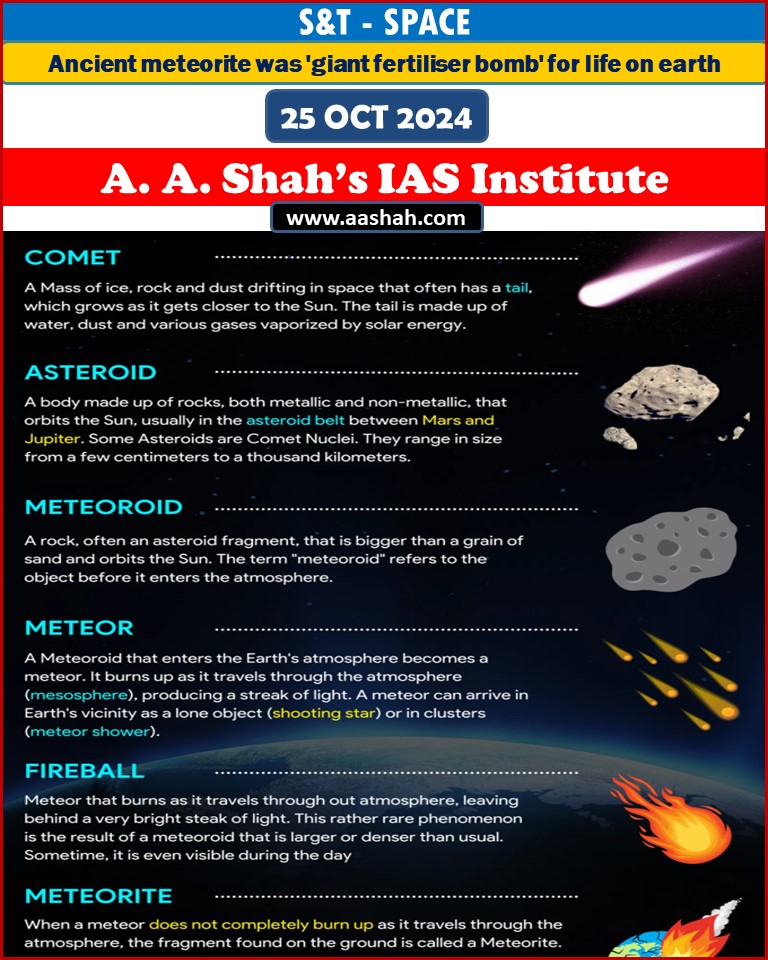
•Impact Event: A massive meteorite, 37-58 km in diameter, struck Earth 3.26 billion years ago, estimated to be 50-200 times the mass of the asteroid that caused the dinosaur extinction.
•Impact Location: The impact likely occurred in the ocean, generating global tsunamis and vaporizing sediments, resulting in a dust cloud.
•Destruction: It caused extreme heat, atmospheric changes, and destruction of sunlight-dependent microbes in shallow waters.
•Recovery of Life: Despite initial destruction, conditions normalized within years to decades, allowing life to not only recover but also to thrive due to increased nutrient availability.
•Nutrient Delivery: The meteorite, a carbonaceous chondrite, enriched the environment with phosphorus and iron, essential nutrients for early microbial life.
